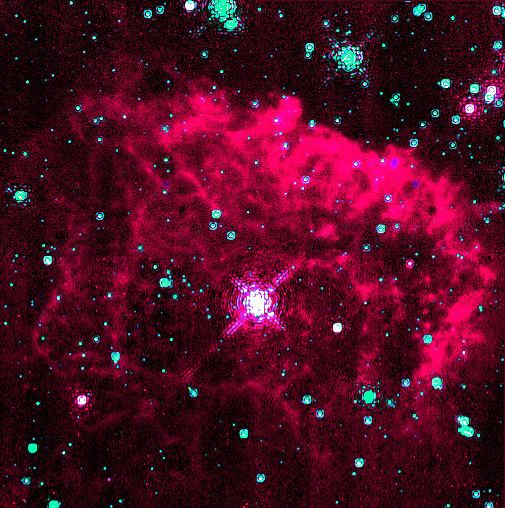 | ||
The Center for Detectors (CfD) is a Rochester Institute of Technology College of Science academic research center. The CfD was founded in 2010 by Dr. Donald Figer. Located in the IT Collaboratory at RIT, the CfD designs, develops, and implements new advanced sensor technologies through collaboration with academic researchers, industry engineers, government scientists, and university students. The mission of the CfD is to enable scientific discovery, national security, better living, and commercial innovation through the design and development of advanced photon detectors and associated technology in a broad array of applications (e.g. astrophysics, biomedical imaging, Earth system science, and inter-planetary travel).
Contents
Research
The CfD uses a multi-disciplinary approach, spanning the many branches of engineering, imaging science, physics and astronomy. Some projects, such as the “Cosmic Ray Damaged Image Repair” project, incorporate astronomy and imaging science. Others, like the NASA-funded Phase II: New Infrared Detectors for Astrophysics project, unite microelectronic engineers, astronomy experts, imaging scientists, and various other professionals in science fields. The Center for Detectors benefits from employees that come from a diverse range of academic programs and professional occupations. The CfD staff includes professors, engineers, and students (undergraduate, masters, and PhD). Many student researchers apply CfD research to their current academic programs at RIT. Students pursue various degrees such as Microelectronic, Computer, and Electrical Engineering. Many undergraduate student researchers choose to pursue master's degrees based on the research that they conduct at CfD.
CfD is grant-funded and has been awarded more than $16M in external funding since 2006. Primary sponsors include NASA, National Science Foundation, and the Gordon and Betty Moore Foundation. Additional sources of funding include Thermo Fisher Scientific, NASA Jet Propulsion Laboratory, ITT Excelis, and Smithsonian Astrophysical Observatory.
Outreach and Communications
Education supplements to two of the CfD grants have funded projects involving students from local high schools. Students mapped the “Journey of a Photon,” and presented their work at venues nationwide. A second group of high school students used an RIT-developed 3D projection system dubbed the “Planeterrainium” to explore planetary surfaces in 3D.
The Center has been featured at several conferences and in press venues. CfD researcher Kim Kolb presented her MS thesis at the SPIE Optics and Photonics Conferences. The Rochester Business Journal and RIT University News have published articles summarizing the foundations of the Center for Detectors to the public, and informing the RIT community about the purpose of the facilities.
CfD has hosted a variety of distinguished speakers as well. Some presenters include Dr. Donald Hall of the University of Hawaii, Dr. Chris Packham of the University of Florida, Dr. Joss Bland-Hawthorn of the University of Sydney, Bruce Tromberg, of the University of California, Irvine, and Dr. Shouleh Nikzad, Dr. Michael Hoenk, and Bedabrata Pain of the California Institute of Technology’s Jet Propulsion Laboratory.
Equipment and Facilities
The Center has four research labs: the Rochester Imaging Detector Laboratory, the Quantum Dot Detector Laboratory, the Clean Room Probe Testing Laboratory, and the LIDAR Laboratory. Three test systems were designed at the CfD, which are essential to the lab’s detector-testing capabilities.
The Center also has access to other RIT facilities, including the Center for Electronics Manufacturing and Assembly, which specializes in semiconductor chip packaging, printed circuit board assemblies, and electronics/optoelectronics systems, and the Brinkman Manufacturing Lab, which provides machining support for in-house fabrications.
